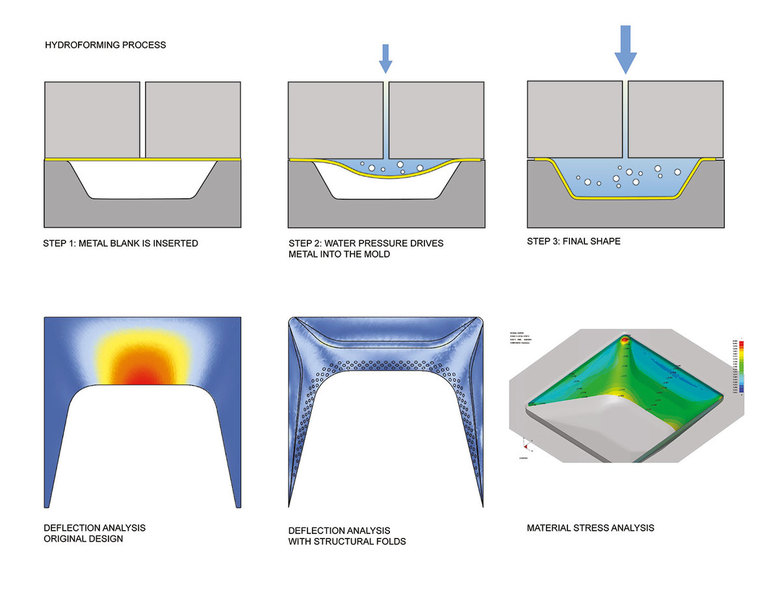Shading Reconsidered
John Hill
18. novembre 2019
Sun protection elements in three buildings by Behnisch Architekten: Agora, Harvard, and Adidas (Photos: L-R: David Matthiessen; center: Behnisch Architekten)
Immobile sunscreens that are designed for a particular location and aim to amplify and optimize sunlight at certain times of the year rather than simply screening the sun are an integral element in three recent projects designed by Behnisch Architekten. Here we take a brief look at each project following from an interview with Stefan Behnisch on German-Architects.
Agora Pôle de Recherche Sur le Cancer, Lausanne, Switzerland, 2018 (Photo: David Matthiessen)
Agora Pôle de Recherche Sur le Cancer, Lausanne, Switzerland, 2018Serving 400 scientists and researchers under one roof, this addition to a cancer research center in Lausanne was shaped by existing buildings as well as the growth of adjacent trees. Analysis led to facades that bend inward and outward — never vertical — and fixed aluminum sunscreens that bring sunlight deep into the plan via white painted surfaces on the top sides of the honeycomb screens.
Agora: Exploded axonometric detail of the facade showing the openings, the 15-degree angles, the window frames, and the sun screen. (Drawing: Behnisch Architekten)
Agora: Section of the facade and laboratory area showing the sunlight reflected on to the ceiling from the outer skin. (Drawing: Behnisch Architekten)
Adidas World of Sports Arena, Herzogenaurach, Germany, 2019 (Photo: David Matthiessen)
Adidas World of Sports Arena, Herzogenaurach, Germany, 2019A similar honeycomb facade wraps Arena, the new office and reception building on Adidas's World of Sports campus in Herzogenaurach. The design team articulated various aspects of the aluminum screen — opaque vs. perforated, the profile of shading elements, and the coating of the surfaces (30% gloss) — in order to avoid harsh light contrasts inside, optimize direct sunlight in the winter, and ensure views to the outside.
Adidas: Detailed drawings of the facade elements. (Drawing: Behnisch Architekten)
Adidas: The complex geometry of the fixed sun screen is apparent when seen from the interior. (Photo: David Matthiessen)
Harvard University Science and Engineering Complex, Boston, Massachusetts, USA, 2020 (Phtoto: Igor Dantas)
Harvard University Science and Engineering Complex, Boston, Massachusetts, USA, 2020Set to house the John A. Paulson School of Engineering and Applied Sciences (SEAS) when it opens in fall 2020, the new Science and Engineering Complex (SEC) is another element in Harvard's rapidly growing Allston campus. The outer skin is made of thermoformed stainless steel shading elements mounted to tension rods. Each panel was modeled based on the direction of the facade in order to, like the two projects in Europe, shade the interiors during the summer but allow direct sunlight in the winter, and avoid harsh contrasts or glare throughout the year.
Harvard: Forming the thermoformed panels. (Drawing: Behnisch Architekten)
Harvard: Facade diagram illustrating how it blocks summer sun, allows the passage of winter sun, and enables natural ventilation. (Drawing: Behnisch Architekten)
Articles liés
-
gmp in the Age of Conversion
2 months ago
-
Autumn Architecture Exhibitions
on 02/09/2024
-
On the Death of Architect Meinhard von Gerkan
on 06/12/2022
-
No Place for Nerds
on 21/07/2021
-
The Return of the Inventors
on 14/06/2021









